The Ultimate Guide to Bed Bug Inspectors: What You Need to Know
Are you losing sleep over the thought of bed bugs invading your home? Fear not! By understanding the importance of professional bed bug inspectors and the crucial role they play in detecting, preventing, and managing infestations, you can regain control of your living space. In this comprehensive guide, we’ll walk you through everything you need to know about bed bug inspectors, from their role in early detection and addressing health risks to the inspection process and choosing the right professional. Let’s put those bed bugs to rest!
Key Takeaways
- Bed bug inspectors are essential for early detection and prevention of infestations, protecting households from potential health risks.
- Qualified bed bug inspectors should possess the necessary licenses, certifications, experience and training to properly evaluate an infestation.
- Preparing one’s home before a bed bug inspection by decluttering and cleaning is important in order to reduce hiding spots and aid in treatment efficacy.
The Importance of Bed Bug Inspectors
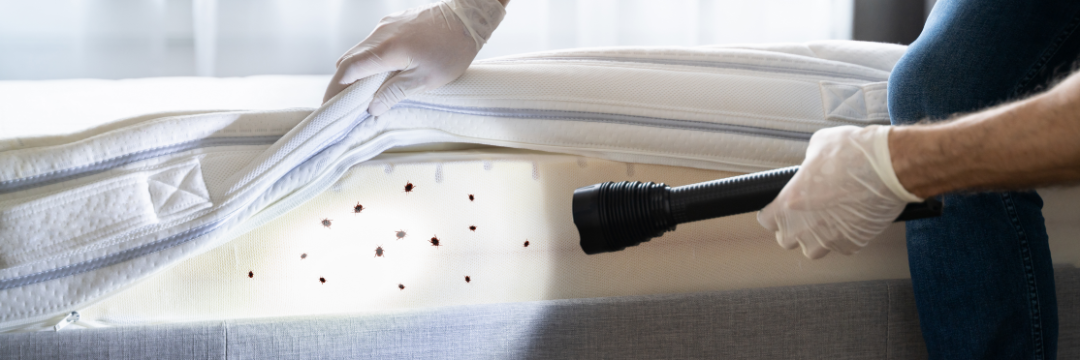
Bed bug inspectors are vital defenders against these unwanted intruders. Their skills in identifying and eradicating bed bugs play a significant role in maintaining a bug-free home and safeguarding your family from the health threats linked with infestations. Through professional bed bug treatment, you can eradicate bed bugs and reinstate tranquility in your home.
After all, there’s no better feeling than knowing your home is free from bed bug activity, and you can finally rest easy. But what renders bed bug inspectors indispensable, and how do they assist in tackling your bed bug problem?
Early Detection and Prevention
Early detection of bed bugs is the key to preventing extensive infestations and the potential health hazards they bring. By spotting the initial signs of a bed bug infestation, such as itchy bites on the skin, bloodstains on sheets, or dark stains on mattresses, you can take swift action and stop the problem from escalating. Bed bugs can spread rapidly; in just six months, a single pregnant female can lead to a full-blown infestation, making professional bed bug treatment a necessity for effective control.
Prompt response is necessary given that bed bugs can proliferate from room to room in no time, using clothing or other items as their transport. Seeking help from a professional bed bug exterminator guarantees early identification and prevention, saving you from the distress and unease of a major infestation.
Health Risks Associated with Bed Bugs
Bed bugs are more than just a nuisance; they could pose serious health risks to you and your family. These tiny pests can cause:
- Skin infections
- Allergic reactions
- Anxiety
- Insomnia
This makes professional inspection and treatment essential for maintaining a healthy home environment.
Also, bed bugs can be difficult to eradicate because they can conceal themselves in many spots around your home, like mattresses, furniture, and power outlets. Engaging a competent bed bug inspector ensures a comprehensive examination of your home and proper treatment of any infestations, safeguarding you and your family from the health threats posed by bed bugs.
The Bed Bug Inspection Process
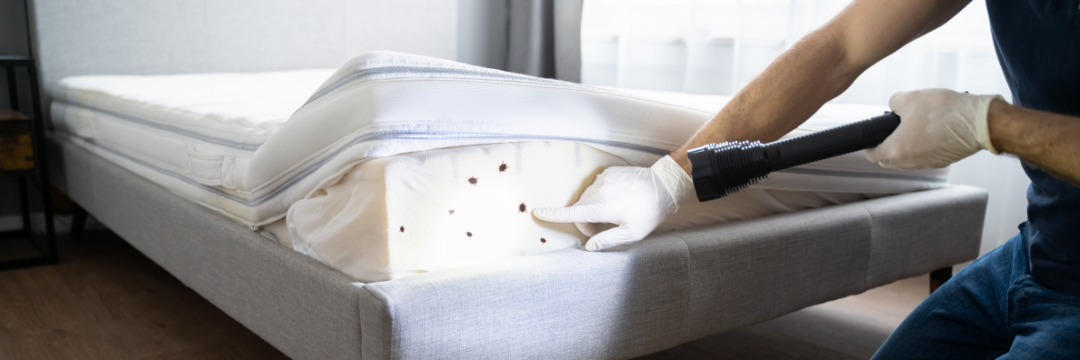
Having grasped the significance of bed bug inspectors, we will now discuss the bed bug inspection process. This procedure aims to pinpoint possible hiding spots and assess the degree of infestation to formulate the most effective treatment plan.
So, what does a bed bug inspection involve, and how does it assist in retaking control of your home?
Initial Consultation and Scheduling
The bed bug inspection process includes the following steps:
- Initial consultation: The inspector evaluates the extent of your bed bug issue and schedules an inspection.
- Thorough inspection: The inspector conducts a comprehensive inspection to assess the presence of bed bug evidence, both old and new.
- Determining the extent of infestation: This inspection helps the inspector accurately determine the extent of the infestation.
- Developing a treatment plan: Based on the inspection results, the inspector develops an effective treatment plan tailored to your unique situation.
The bed bug inspector’s role during the initial consultation is to:
- Thoroughly inspect your home or business using specialized tools to detect bed bug infestations
- Modify the treatment plan based on the inspection findings
- Determine the most suitable course of action to exterminate the bed bugs effectively.
After the consultation, the inspection is typically scheduled within a one to three-week window from the date it is booked.
On-site Inspection
During the on-site inspection, a professional bed bug inspector will conduct a comprehensive assessment of your property to pinpoint bed bug hiding sites and evaluate the infestation levels. This thorough examination includes inspecting beds, nightstands, baseboards, couches, and other potential hiding spots for bed bugs, looking for signs such as live bugs, fecal spots, blood spots, egg cases, shed skins, and bite marks on the occupants.
By identifying the extent of the infestation and the specific locations where bed bugs are hiding, the inspector can devise an appropriate treatment plan to effectively eliminate the pests from your home. This on-site inspection is a critical step in the bed bug inspection process, as it ensures that your bed bug problem is accurately assessed and addressed.
Post-Inspection Report and Recommendations
Following the on-site inspection, you will receive a post-inspection report that provides a comprehensive overview of the findings, including:
- Information about the areas inspected
- Any signs of bed bugs observed
- The severity of infestation
- Any recommendations for treatment or prevention
These recommendations typically include:
- Re-inspecting your home regularly post-treatment
- Allowing for airing of rooms
- Washing and drying linens and clothing in treated rooms
- Disinfecting surfaces
- Vacuuming sleeping areas
- Inspecting for bed bugs at least every seven days
By following these recommendations for bed bug control, you can ensure that your home remains bed bug-free and that any future infestations can be promptly addressed.
Qualities of a Reputable Bed Bug Inspector
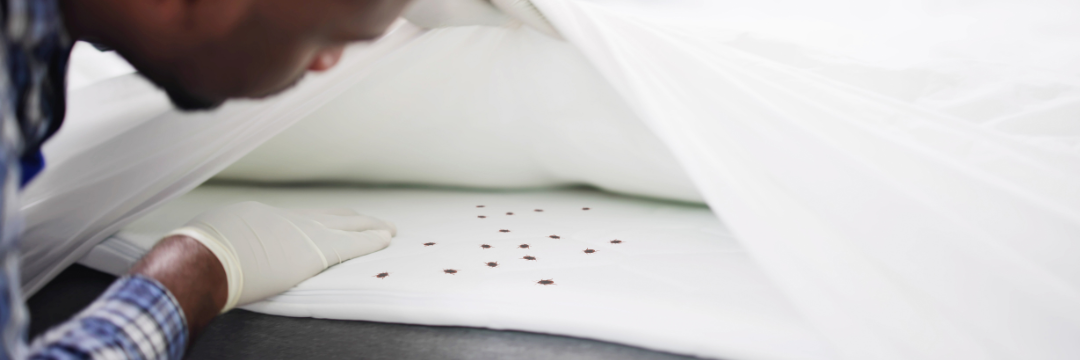
Understanding the bed bug inspection process is crucial, but it’s equally significant to find a trustworthy bed bug inspector who can effectively handle your bed bug problem. A qualified inspector should possess the necessary licenses and certifications as required by state regulations, as well as have positive customer reviews attesting to their professionalism and effectiveness.
But what particular traits should you seek in a bed bug inspector?
Experience and Training
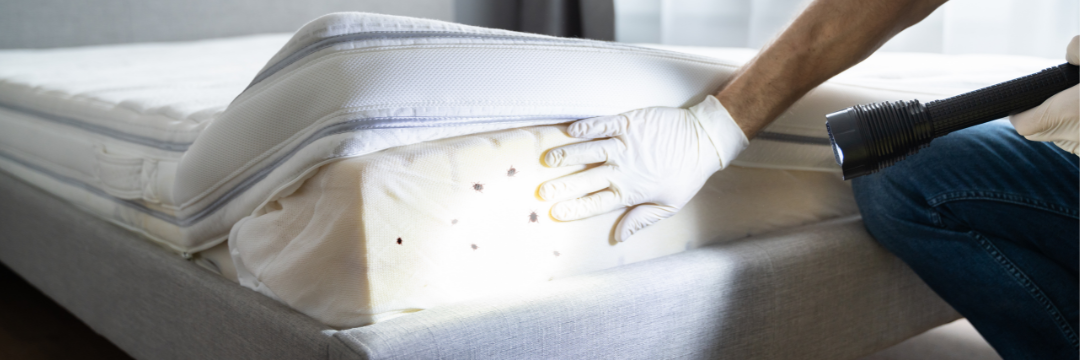
A qualified bed bug inspector should have:
- Extensive experience and training in bed bug detection and treatment
- The ability to work quickly and effectively
- Efficiency in identifying and addressing bed bug infestations
This experience is invaluable in ensuring a thorough and effective inspection.
Bed bug inspectors must also complete training programs to gain knowledge and proficiency in bed bug inspection and eradication. These programs are typically conducted by experienced professionals in the field and cover topics such as heat treatment techniques, inspection methods, and chemical treatment processes. By opting for an experienced and adequately trained bed bug inspector, you can rest assured that your bed bug issue will be precisely evaluated and treated effectively.
Licensing and Certifications
Licensing and certifications are essential factors to consider when choosing a bed bug inspector, as they ensure that the inspector is knowledgeable and adheres to industry standards. The licensing requirements for bed bug inspectors may vary depending on the state, so it’s important to consult the relevant state’s regulatory agency to ascertain the specific licenses required.
A reputable bed bug inspector should also possess certifications such as Master Heat Technician Certification, Bed Bug Detection Dog Certification, Bed Bug Education and Training Course Certification, and others. By selecting a licensed and certified bed bug inspector, you can trust their professionalism and their capacity to offer efficient bed bug treatment.
Customer Reviews and Testimonials

Customer reviews and testimonials can provide valuable insight into the professionalism and effectiveness of a bed bug inspector. To assess the quality of a bed bug inspector, you can:
- Review online reviews on platforms such as Angi, Yelp, and Google Reviews
- Request references from the inspector
- Contact past customers for their feedback
By utilizing these methods, you can gather information to make an informed decision about a bed bug inspector.
When evaluating customer reviews, consider factors such as:
- The inspector’s integrity
- Openness
- Effectiveness in identifying bed bugs
- Qualifications
- Service quality
Positive reviews that address these criteria can give you confidence in the inspector’s reliability and expertise, helping to ensure a successful bed bug treatment.
Preparing Your Home for a Bed Bug Inspection
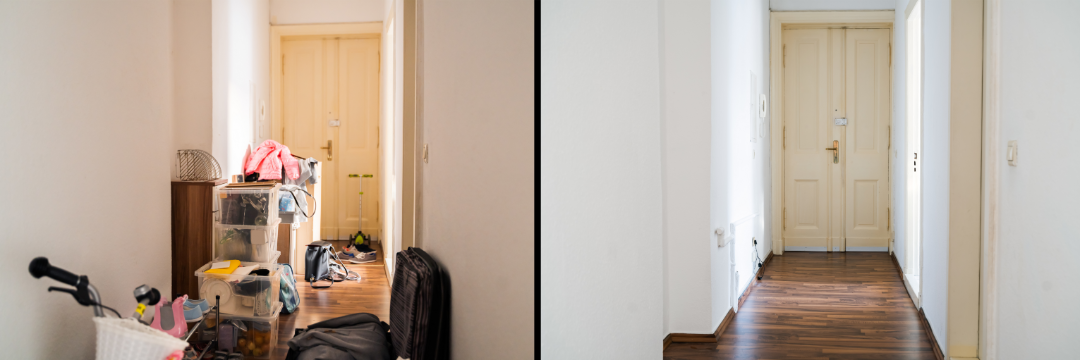
Before the onset of the bed bug inspection, it’s important to ready your home to guarantee the most efficient inspection and treatment possible. By decluttering, cleaning, and laundering bedding and clothing, you can help expose bed bug hiding spots and make the inspection process more efficient.
So, what particular measures should you undertake to ready your home for a bed bug inspection?
Decluttering and Cleaning
Decluttering and cleaning your home before a bed bug inspection is essential, as it reduces the number of possible hiding spots for bed bugs and enhances the efficacy of insecticides and other treatments. By clearing clutter and creating an orderly space for the inspection, you can help eradicate bed bug debris and allergens, making it easier to detect potential signs of bed bugs during the inspection and prevent the spread of bed bugs to other parts of your home.
Specific cleaning tasks that should be completed before a bed bug inspection include:
- Storing all clothing, linens, shoes, coats, pillows, and other fabric items in large, clear plastic bags
- Scrubbing suspected areas with window cleaner or liquid Oxygen products to loosen eggs
- Thoroughly cleaning the room, including furniture, walls, and floors
- Removing any items such as mattresses or furniture from the home
By undertaking these measures, you can guarantee a more efficient bed bug inspection procedure.
Laundering Bedding and Clothing
Laundering bedding and clothing at high temperatures can help kill bed bugs and their eggs, reducing the risk of infestation. Here’s how to do it:
- Set your washing machine to a temperature of around 140 degrees Fahrenheit (60 degrees Celsius).
- Place the infested bedding or clothing in the washing machine and add detergent.
- Run a full cycle with hot water.
- After washing, transfer the items to the dryer.
- Dry them on high heat for at least 30 minutes.
This bed bug removal process can effectively eliminate bed bugs in laundry.
Before laundering, it’s important to sort any clothes that may have bed bugs on them and place them into sealed bags to prevent the spread of bed bugs to other items in your home. By properly laundering your bedding and clothing, you can reduce the risk of bed bug infestations and ensure a cleaner, healthier home environment.
What to Do After a Bed Bug Inspection
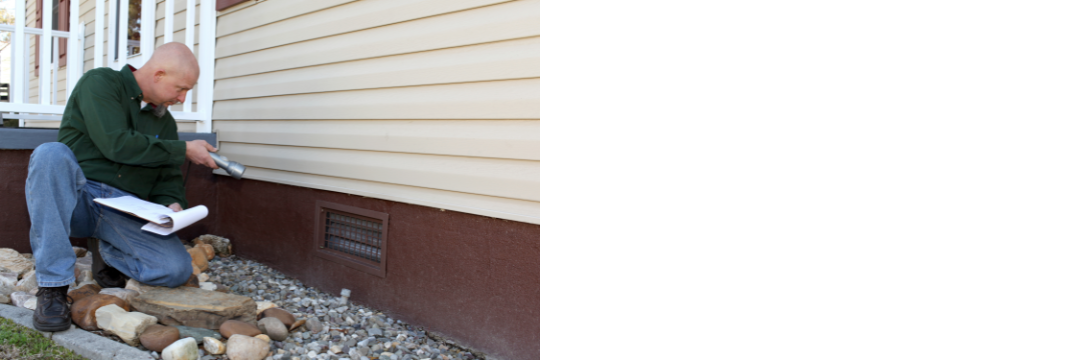
Once the bed bug inspection is accomplished, it’s time to act to tackle the infestation and avert future incidents. This involves choosing an appropriate treatment method and implementing preventative measures to keep your home bed bug-free.
Let’s discuss the measures you should undertake following a bed bug inspection to effectively eradicate these unwanted pests.
Choosing a Treatment Method
There are several treatment options available for bed bugs, including heat treatment, chemical treatments, environmentally-friendly organic treatments , and integrated pest management approaches. The most effective method for your situation will depend on factors such as the level of infestation, the location of the infestation, and your personal preferences.
Consulting with a professional bed bug exterminator can help you determine the best treatment method for your specific needs. By selecting an appropriate treatment method and working with a qualified exterminator, you can effectively eliminate bed bugs from your home and regain your peace of mind through bed bug extermination.
Preventing Future Infestations
Preventing future bed bug infestations is just as important as eliminating the current problem. Maintaining cleanliness in your home, using mattress encasements, and monitoring for signs of bed bugs can help prevent future infestations.
Be vigilant in inspecting your home for signs of adult bed bugs and live bed bugs, such as:
- bed bug bites on the skin
- clusters of bites
- staining on bedding and furniture
- blood spots
- fecal spots
- molted exoskeletons
- a sweet musty scent
By routinely checking for these signs and acting accordingly if they are spotted, you can help assure that your home stays free of bed bugs and safeguard your family’s health and well-being.
Summary
In conclusion, bed bug inspectors play a crucial role in detecting, preventing, and managing bed bug infestations. By understanding the importance of professional bed bug inspectors, the inspection process, and the necessary qualifications, you can make informed decisions when dealing with bed bug issues. Preparing your home for a bed bug inspection and taking steps to prevent future infestations will help ensure a cleaner, healthier living environment for you and your family.
Remember, knowledge is power when it comes to dealing with bed bugs. By staying informed and taking action, you can regain control of your home and enjoy a peaceful, bug-free existence.
Frequently Asked Questions
How do you inspect bed bugs?
Look for actual bugs, eggs, feces, or molted skin along mattress seams and box springs, in the corners of furniture, behind the headboard, and inside nightstand drawers. Wear protective gloves when inspecting these areas as bed bugs are attracted to warmth.
How much does pest control for bed bugs cost?
Bed bug exterminator services typically cost between $300 and $5,000, with an average national cost of $1,500. Costs include an initial inspection fee of $50 to $200 and a service charge based on an hourly, flat, or room-by-room rate.
What to do when you find evidence of bed bugs?
Contacting a professional pest control company is the best course of action. If you really want to DIY, you can dry infested items in a hot dryer to kill the bugs and their eggs. Use bedbug-proof mattress covers to trap any remaining pests inside.
Should I clean before bedbug inspection?
Vacuum baseboards to remove dust build-up, but it is not necessary to remove ornaments and other items from drawers or cupboards unless they are within 5 feet of a bed or clearly infested.
What is the best non professional treatment for bed bugs?
The best non professional treatment for bed bugs is Heat Treatment, which involves raising the temperature of the infested area to a level that is lethal to bed bugs but safe for humans and pets. This method is effective in killing bed bugs and their eggs in all life stages, and may use specialized equipment to ensure even distribution of heat. Pyrethrins and pyrethroids are also common compounds used in pest control.











